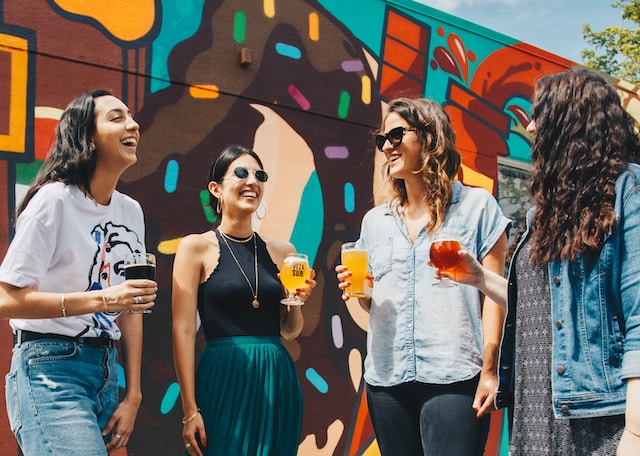Subtitle 1: Fostering Connections and Building Relationships
Building a strong and vibrant neighborhood begins with fostering connections and building relationships among its residents. When people feel connected to their neighbors, they are more likely to engage in activities that benefit the community as a whole. Here are a few ways to foster connections and build relationships within your neighborhood:
1. Organize community events: Hosting regular events such as block parties, picnics, or neighborhood clean-up days can bring residents together and provide opportunities for interaction. These events create a sense of belonging and encourage neighbors to get to know one another.
2. Establish a neighborhood watch program: Safety is a common concern for many communities. By establishing a neighborhood watch program, residents can work together to keep their neighborhood safe and secure. This program not only helps prevent crime but also strengthens the bonds between neighbors.
3. Create online platforms: In today’s digital age, online platforms can be a powerful tool for building community. Setting up a neighborhood website or social media group allows residents to connect, share information, and organize community initiatives. These platforms can be used to promote local businesses, share resources, and plan events.
Subtitle 2: Supporting Local Businesses and Initiatives
A strong neighborhood is often characterized by a thriving local economy and a sense of pride in supporting local businesses and initiatives. Here are some ways to support and promote local businesses within your community:
1. Shop locally: Whenever possible, choose to shop at local businesses rather than large chain stores. By doing so, you contribute to the local economy and help create jobs within your community. Additionally, local businesses often offer unique products and personalized services that enhance the character of the neighborhood.
2. Collaborate with local organizations: Partnering with local organizations, such as schools, community centers, or non-profit groups, can strengthen the fabric of the neighborhood. By working together on projects or initiatives, residents can address common challenges and create positive change.
3. Promote local events and initiatives: Spread the word about local events, fundraisers, or initiatives happening in your neighborhood. Utilize online platforms, community bulletin boards, or word-of-mouth to raise awareness and encourage participation. Supporting these events not only benefits the organizers but also fosters a sense of community pride.
Subtitle 3: Engaging in Volunteerism and Civic Participation
Active civic participation and volunteerism are essential for building stronger neighborhoods. When residents are engaged in their community, they have a sense of ownership and are more likely to work towards its improvement. Here are a few ways to encourage volunteerism and civic participation:
1. Join or start a community organization: Getting involved in a community organization allows residents to contribute their skills and expertise towards common goals. Whether it’s a neighborhood association, a gardening club, or a youth mentorship program, these organizations provide opportunities for residents to make a positive impact.
2. Support local schools and educational initiatives: Education is a cornerstone of any community. By supporting local schools and educational initiatives, residents can help create a nurturing environment for children and contribute to the overall well-being of the neighborhood. This can involve volunteering as a tutor, donating school supplies, or attending school events.
3. Participate in local government: Engaging with local government is an effective way to influence decisions that directly impact the neighborhood. Attend community meetings, voice concerns, and provide input on issues that affect your community. By actively participating in local governance, residents can shape the future of their neighborhood.
In conclusion, building stronger neighborhoods requires fostering connections, supporting local businesses, and engaging in volunteerism and civic participation. By implementing these strategies, residents can create a sense of belonging, promote economic growth, and work together towards a better community. Remember, the power of community lies in the hands of its residents, and by taking action, we can build stronger and more vibrant neighborhoods for everyone to enjoy.











